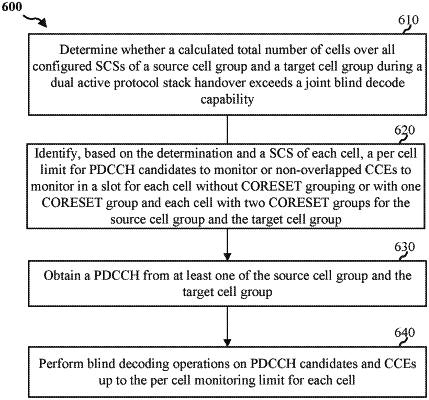| CPC H04W 36/0083 (2013.01) [H04W 36/08 (2013.01)] | 30 Claims |

|
1. An apparatus for wireless communication, comprising:
a processing system configured to:
determine whether a calculated total number of cells over all configured sub-carrier spacings (SCSs) of a source cell group and a target cell group during a dual active protocol stack (DAPS) handover exceeds a joint blind decode capability;
identify, based on the determination and a SCS of each cell, a per cell limit for physical downlink control channel (PDCCH) candidates to monitor, or non-overlapped control channel elements (CCEs) to monitor
in a slot for
each cell without control resource set (CORESET) grouping or with one CORESET group, and
each cell with two CORESET groups if configured
for the source cell group and the target cell group; and
perform blind decoding operations on PDCCH candidates and CCEs up to the per cell monitoring limit for each cell; and
a first interface configured to obtain a PDCCH from at least one of the source cell group and the target cell group.
|